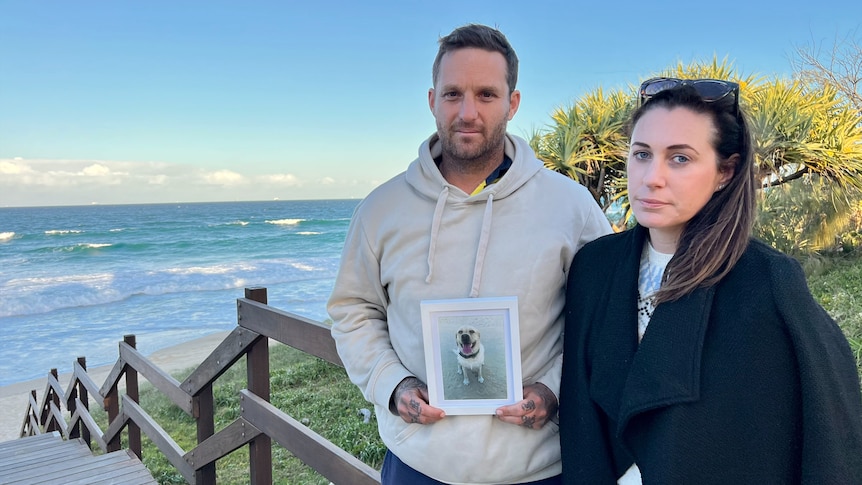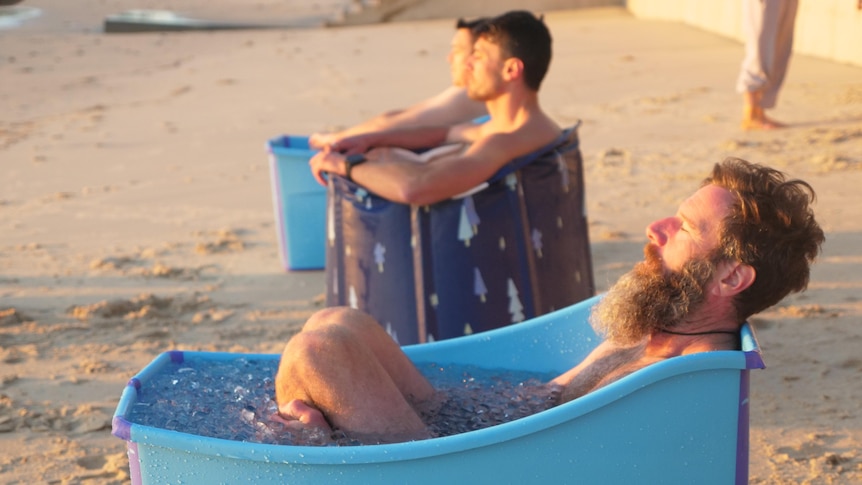For Samantha Barrass and her family, the loss of their golden labrador Pepper this week has been made even harder by the knowledge it may have stemmed from a deliberate, malicious act.
Key points:
- Sunshine Coast Council has received reports of seven dogs poisoned at Buddina
- The council, police and RSPCA investigators are working to determine the cause
- Coast dog owners are in shock and taking extra precautions
“It’s unbelievable… it just makes you sick to the stomach… there’s no words,” Ms Barrass said.
“I don’t know how you could harm let alone kill an innocent, defenseless animal and a dog… that provides so much joy.”
Pepper was one of five dogs to die after visiting Buddina beach — a popular off-leash area on the Sunshine Coast.
Pepper exhibited poisoning symptoms several hours after her walk.
Ms Barass said her dog died at the vet clinic on Tuesday
Breaking the news to her five-year-old daughter was one of the hardest things she’d had to do.
“She just wants Pepper to be home and can’t kind of comprehend what’s happened,” Ms Barass said.
“She was the happiest dog…stupidly happy…she was the brightest of all of us.”
Dog bowls removed
Sunshine Coast police and the RSPCA are investigating, with at least seven dogs affected, including the five that have died.
Several of the owners told authorities their dogs had drunk from water bowls at Buddina, near beach access 210.
Sunshine Coast councilor Joe Natoli said portable drinking bowls had been removed while fixed bowls had been sealed to prevent further contamination.
“We’ll increase our surveillance of the area,” Mr Natoli said.
“Council is actually asking people that if they if they have their dogs, and they’re in off leash areas, to be very vigilant to make sure that they keep an eye on their dogs.”
Kawana Waters police officer-in-charge Mark Cordwell encouraged pet owners to make an official report.
“We would like to try and pinpoint the location where all these dogs were may have frequented, as well as the times,” Senior Sergeant Cordwell said.
If found to be a deliberate act, those responsible could face up to seven years in jail.
“It’s certainly serious matters,” Senior Sergeant Cordwell said.
“It is concerning enough for us to commence an investigation.”
dog lovers in shock
The news has rocked the Sunshine Coast community, particularly dog park regulars.
Many took to social media to say they wouldn’t be visiting the area until the source of the poisoning had been found.
Buderim resident Gary, who didn’t want to give his full name, didn’t take his dog I went to the park on Wednesday but spent the morning warning other walkers.
“I thought I’d come down here and sit for half an hour and anyone with a dog coming along, I would mention to them just in case they hadn’t heard the news,” Gary said.
“So that they can be wary and maybe keep their dog on the leash and prevent them from eating something, if there’s something around.”
Meanwhile, Ms Barrass said she was determined to help with the investigation into the dog deaths to ensure there was justice for the animals lost.
“Pepper was only four… it would be different if she went from old age or she developed a health complaint,” she said.
“For someone… an individual or a group of people… to be part of the death… that’s just viciousness.”
.



